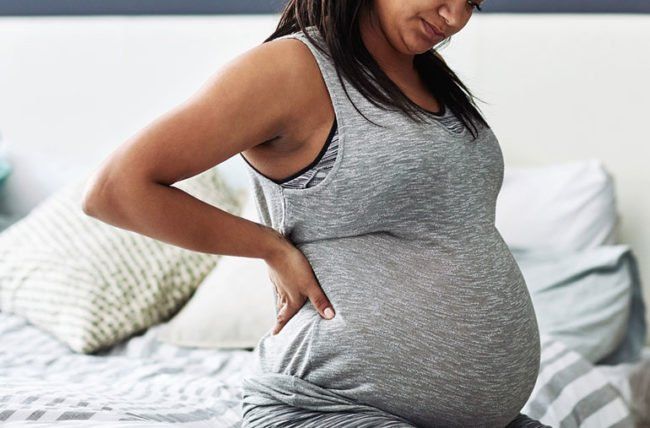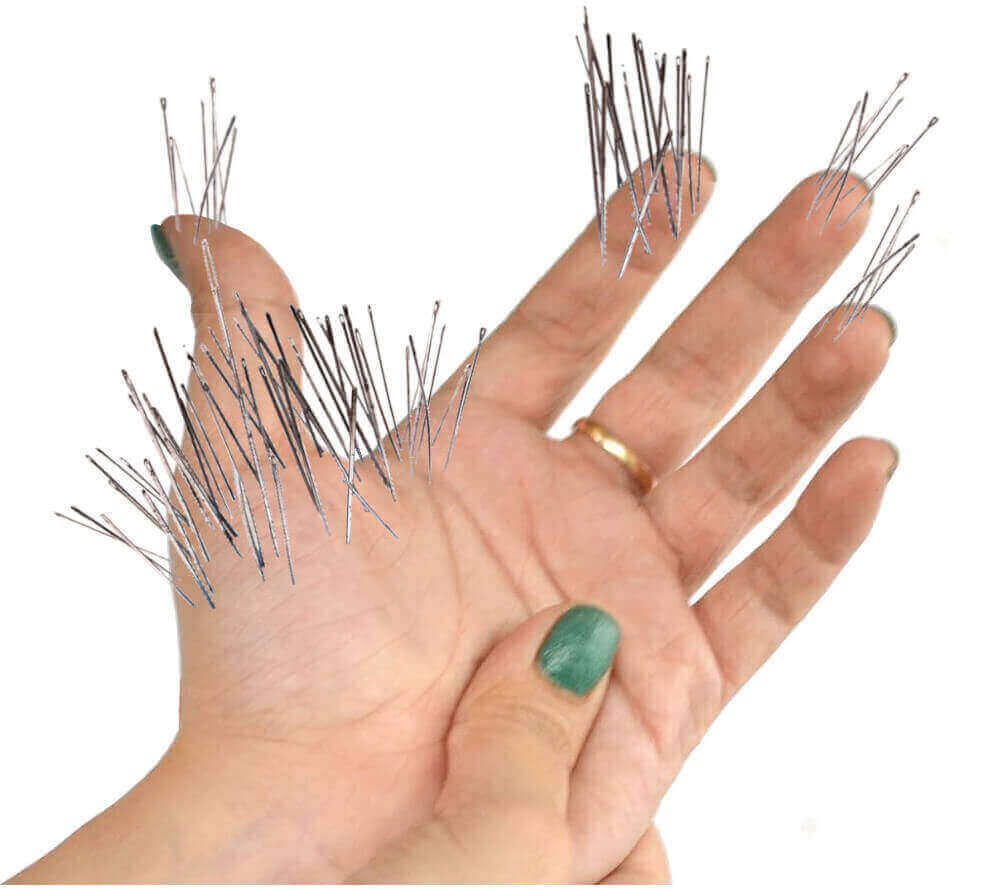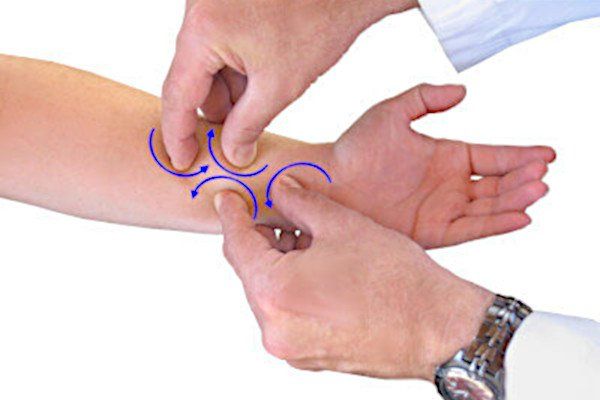Guide to Carpal Tunnel in Pregnancy
From Dr. Z - Carpal tunnel syndrome specialist
Carpal Tunnel in Pregnancy
Most expectant mothers know about the problem of carpal tunnel in pregnancy. Sure, it's an issue. But there are also safe ways to make it go away.
Before I describe the best ways to get rid of carpal tunnel safely,
let me congratulate you!
You’re probably filled with joy and excitement right now. In fact, you’re very likely overwhelmed with advice from every “expert” who has any opinion about pregnancy.
Of course it's important to learn the best ways to take care of yourself and your unborn child. And if you’ve developed carpal tunnel symptoms, you should be especially careful. Treating it safely is a major concern - but you can do it!
- FIND OUT: do you have carpal tunnel? No strings attached self-test.
Why do you get carpal tunnel in pregnancy?
After decades of working with carpal tunnel patients, you get to know what's on the mind's of expectant mothers. The three most common questions I get are:
- “How did I get carpal tunnel?"
- "Will it go away on its own?"
- “How can I get rid of it safely right now?”
I’ve spent many years giving the answers, and they hold true today as much as ever. Getting carpal tunnel during pregnancy isn't a mysterious phenomenon. It's common, and we know why it happens. Hopefully, the answers you're looking for are right here.
Carpal tunnel in pregnancy is due to fluid retention
To understand why you get carpal tunnel in pregnancy, we must discuss changes in hormones during pregnancy. Pregnancy produces huge disturbances in body fluid levels. That results in swelling, nerve sensitivity, and changes in blood glucose concentration.
Many times those fluids build up more in one area than another. Women feel it as swollen ankles, swollen wrists, etc. Fluid retention problems are among the most common complaints during pregnancy.
Whether or not you're pregnant, fluid retention is the main cause of carpal tunnel syndrome. Pregnancy causes fluid retention. But so does tendon irritation inside the wrist joint. Nobody is really sure why tendons get irritated to begin with. But the end result is they produce inflammation and fluid swelling inside the wrist joint.
When fluids build up inside the wrist, pressure rises. It all happens in a small, narrow space called the “carpal tunnel”. This space contains several tendons and blood vessels. Most importantly, the space also contains one of the main nerves of the hand, the median nerve.
The rising fluid pressure pushes on everything in the carpal tunnel, including the nerve. Eventually, the nerve becomes compressed. And since nerves don’t like being compressed, they react by causing symptoms like finger or hand:
- numbness
- pain
- tingling (pins & needles)
- weakness
These are the primary warning signs of carpal tunnel syndrome. And you can have one or all of these symptoms at the same time.
Pregnant women are not the only ones to suffer the results of fluid retention. Patients who have metabolic disorders causing fluid retention also are prone to getting carpal tunnel syndrome. For instance, women in menopause, diabetics, and those with kidney disease easily develop carpal tunnel.
However, unlike carpal tunnel during pregnancy (which is a temporary condition), these patients can suffer with fluid retention - and carpal tunnel -
for many years.
Facts about carpal tunnel in pregnancy
Carpal tunnel syndrome during pregnancy was first described in detail by Dr. A. Zyluk in the journal Polish Orthopedic Traumatologyin 2013. Today, we know that carpal tunnel in pregnancy is extremely common.
New research shows that at any given moment, nearly one million pregnant women have full blown carpal tunnel syndrome. Other facts about the symptoms include:
- Carpal tunnel in pregnancy usually appears in the
third trimester.
- The frequency of this condition during pregnancy varies from 2% to 70%.
The difference is due to getting an improper carpal tunnel diagnosis.
- In 50% of cases the condition usually resolves within three months after delivery.
- However, for
another 25% of patients it takes one year for carpal tunnel acquired in pregnancy to resolve fully.
- Finally, for the remaining 25% of women, carpal tunnel symptoms last for three or more years after delivery.
Safely treating carpal tunnel in pregnancy
By far, the most emotional question I get is, “How do I get rid carpal tunnel safely, without hurting my baby?”
Of course, if pregnancy wasn’t in the picture, you might think cortisone injections (steroid shots) are the answer. These shots work, but not all the time. Also, due to their side effects, you can only use cortisone shots sparingly during your lifetime.
If you're pregnant, doctors advise against steroid shots. But if you are not pregnant, doctors recommend you have no more than 4 cortisone shots - ever. That’s because cortisone shots can cause fluid build-up in other body parts. Also, they can result in serious side effects like kidney problems, nerve damage, joint damage, and osteoporosis.
Carpal tunnel in pregnancy usually is not a serious matter because the symptoms are often mild. Actually, most patients don’t need special treatment at all.
There are also carpal tunnel prevention methods to keep symptoms from worsening. All pregnant women should begin using such precautionary measures when carpal tunnel warning sign first appear.
Prevention therapy is simple. Basically, you start by bracing your wrists at night. Most times this alone improves symptoms. The key is to begin treating the symptoms now. Letting it go until after delivery is not advised because it will extend your misery longer.
Moreover, if symptoms worsen to a more severe stage, they'll cause intense distress on a daily basis. At that point, more serious treatment options are required to completely eliminate symptoms.
Myofascial release for carpal tunnel in pregnancy
Not being able to use steroid shots during pregnancy might sound unfortunate. However, there is a safe and highly effective way to get rid of carpal tunnel symptoms.
Myofascial release massage therapy is a superior, all-natural remedy for carpal tunnel in pregnancy - or any other time. In fact, massage for carpal tunnel is the standard treatment therapists give their patients, especially pregnant women. It provides safe, long-lasting relief of symptoms.
Myofascial release massage therapy is an ancient treatment. Practitioners have known about its effects for thousands of years. Today we understand how this therapy works.
It reduces swelling and drains excess fluids from joints. Also, we know this treatment breaks apart adhesions and restrictions between tendons. That’s what causes the fluid build-up around tendons in the first place. And that's why therapists prefer using myofascial release for treating carpal tunnel in pregnant women and any other type of patient.
Conclusions
Women experiencing carpal tunnel in pregnancy always seek a remedy that's also safe for the baby. Happily, there are many such remedies. The most powerful one is myofascial release massage. It's the preferred method used by therapists. It's highly effective and completely safe. Therefore, you don’t have to suffer one bit with carpal tunnel syndrome during your pregnancy.






